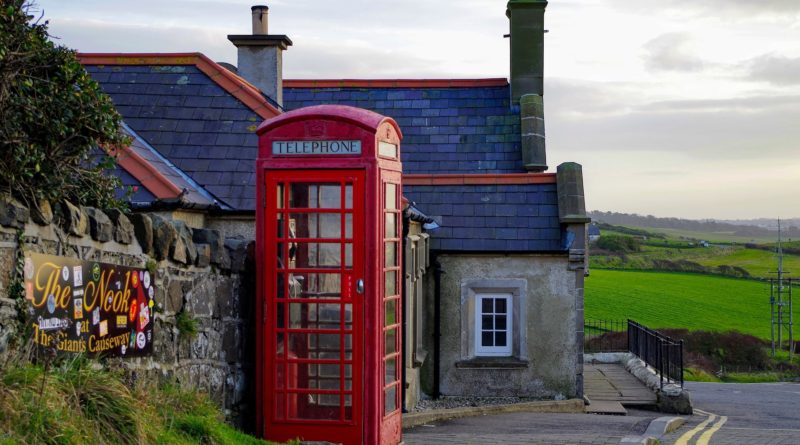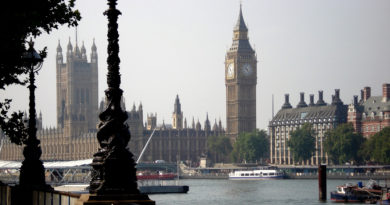What Brexit means for future of the Common Travel Area between Ireland and the UK
They’ve done it. The UK and Ireland have agreed on something Brexit-related, written it down, and finalised it. Alas, the UK-EU withdrawal agreement remains mired in controversy, but that shouldn’t distract from the important stepping stones being put in place regarding the Common Travel Area between the UK and the Republic of Ireland.
The Common Travel Area allows visa-free travel between the UK, Ireland, the Isle of Man and the Channel Islands for all citizens. Beyond travel, related legislation in each member of the Common Travel Area has long allowed citizens of other members to be treated in most regards as if they are home citizens, for example for work or residency purposes.
The Common Travel Area was once touted as the solution to virtually every difficulty that Brexit posed for Ireland and Northern Ireland. Although both the UK and Ireland have facilitated cross-border travel for each others’ citizens for the best part of a century, our recent research has demonstrated this isn’t sufficient to keep the border open in the event of a no-deal Brexit.
The arrangements have existed for decades in a patchwork of laws and policies. Besides a tweak to immigration policy in 2011, little attention has been given to the Common Travel Area, and EU free movement law has provided a more developed legal framework. For example, welfare provisions in Northern Ireland which disadvantaged cross-border workers were only fixed after litigation under EU law.
What’s needed after March 29, or Brexit day, is a clear legal basis for the Common Travel Area both in the UK and Ireland’s own legal systems, underpinned by an international agreement between the two countries.
Agreement on social security
In February 2019, a newly agreed memorandum of understanding (MoU) on social security belatedly started the process of solidifying these arrangements. For those whose lives straddle the border in Ireland or who move from the UK to Ireland (or vice versa), these new measures will provide some certainty over rights even in a no-deal Brexit scenario.
This agreement on social security equivalence is hugely important, particularly in providing a basis for shared rules. To know whether someone who claims benefits in Louth should be paid by the UK or Ireland currently relies on where that person is “habitually resident”. If, after Brexit, the two countries adopted substantially different rules, people could claim in both countries or get stuck in a gap where neither system considered them a resident.
This scenario is just the tip of the iceberg, and as many convoluted examples exist as there are complexities in people’s lives and patterns of work. This new MoU signals the start of a common, bilateral, understanding on these matters. Next, making sure that the benefits system is efficient and fraud is prevented will require data sharing across borders. In a no-deal scenario the UK would lose access to the EU database on social security, and provisions of the new MoU could rescue social security and pensions from complete chaos.
Alongside this MoU, a new immigration and social security bill before the UK parliament aims to tidy up Common Travel Area arrangements which predated the age of mass air travel. At the moment, a strict reading of the law would suggest that visa-free travel after Brexit would only apply when an Irish national travels directly to the UK from Ireland. The change would make an Irish national’s point of departure irrelevant, meaning they will enjoy access to the UK without a visa even if they arrived from another country such as France, or the United States.
Both countries want to make sure that UK and Irish nationals are treated like home citizens in most respects. Both governments have emphasised that the area existed before their countries’ EU membership and that its benefits should therefore continue after Brexit.
Still, these arrangements are no substitute for a comprehensive withdrawal agreement. First, this MoU only covers the UK and Ireland. Second, its full terms only cover UK and Irish nationals, meaning other EU nationals who have moved their lives between the two countries won’t benefit. Third, it doesn’t cover matters of trade or regulation, and because Ireland granted the EU competence to manage these issues, the two countries cannot address them bilaterally. All of these issues require the UK and EU to agree a future Brexit deal.
More work to do
Social security and pensions is just one area of rights related to the Common Travel Area, and other problems remain. Much is in the pipeline, but the UK and Ireland urgently need to finalise agreements across areas as diverse as security, health, and education.
The Common Travel Area and the rights associated with it reflect an important part of the two nations’ shared history, a reality that isn’t well served by multiple technical legal documents. One potential way to resolve this issue would be for Ireland and the UK to conclude a general framework agreement. This could restate their intention to treat UK and Irish nationals as equivalent to home citizens and to continue to use the Common Travel Area as the foundation of a close and co-operative relationship. Any relevant domestic law could be interpreted in light of these arrangements.
The recent MoU is a recognition that the two governments can be proactive in smoothing administrative bumps, even if the wider Brexit debate frequently presents them as being at loggerheads. But much more needs to be agreed before there can be any collective sigh of relief. The UK and Ireland might have decided who gets the Guinea pig in the divorce, but there’s still the matters of the kids, house and car.
Colin Murray, Reader in Public Law, Newcastle University and Ben Warwick, Lecturer in Law, University of Birmingham
This article is republished from The Conversation under a Creative Commons license. Read the original article. Photo via Pixabay.
The UK guidance on the Common Travel Area is available here.




